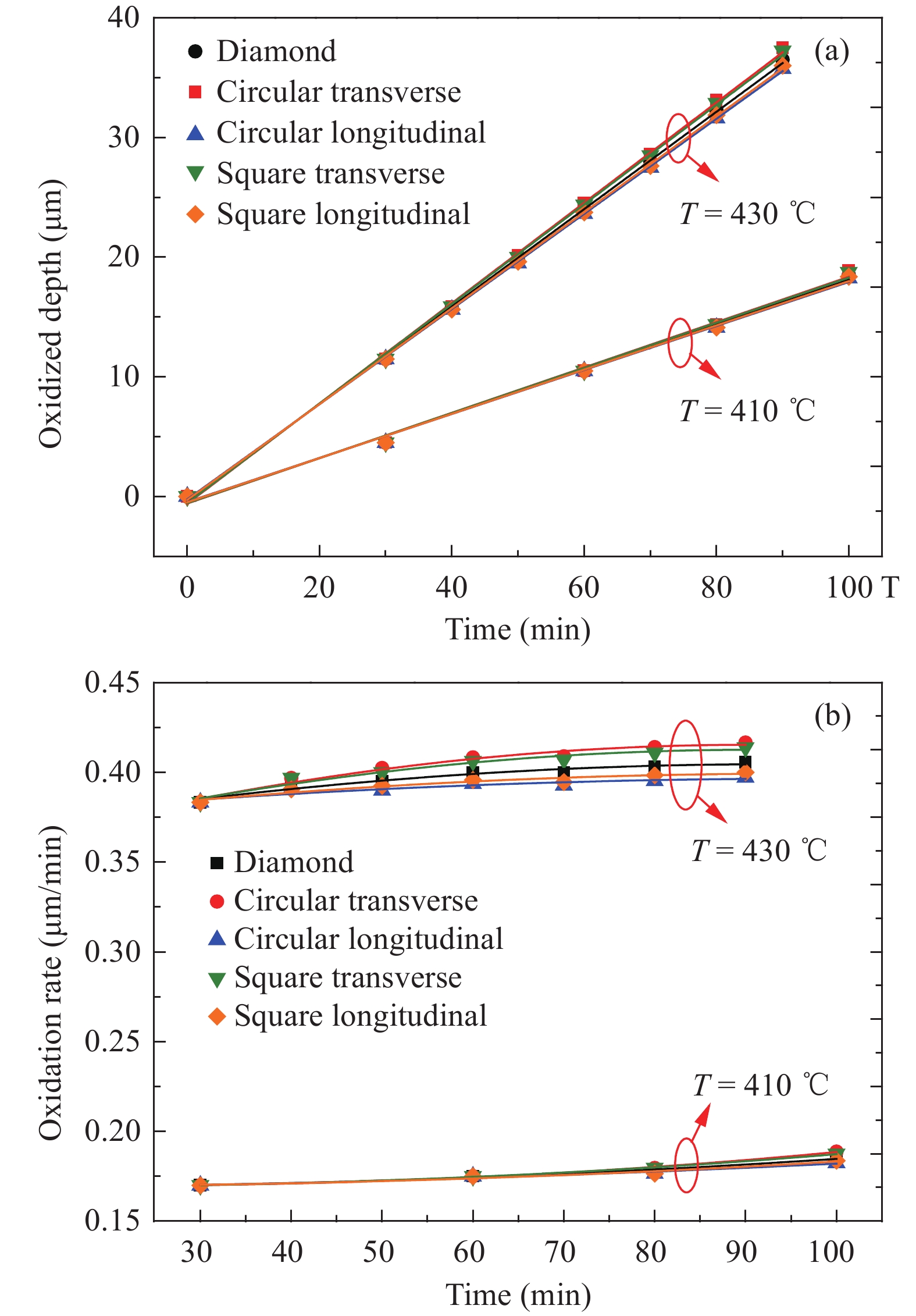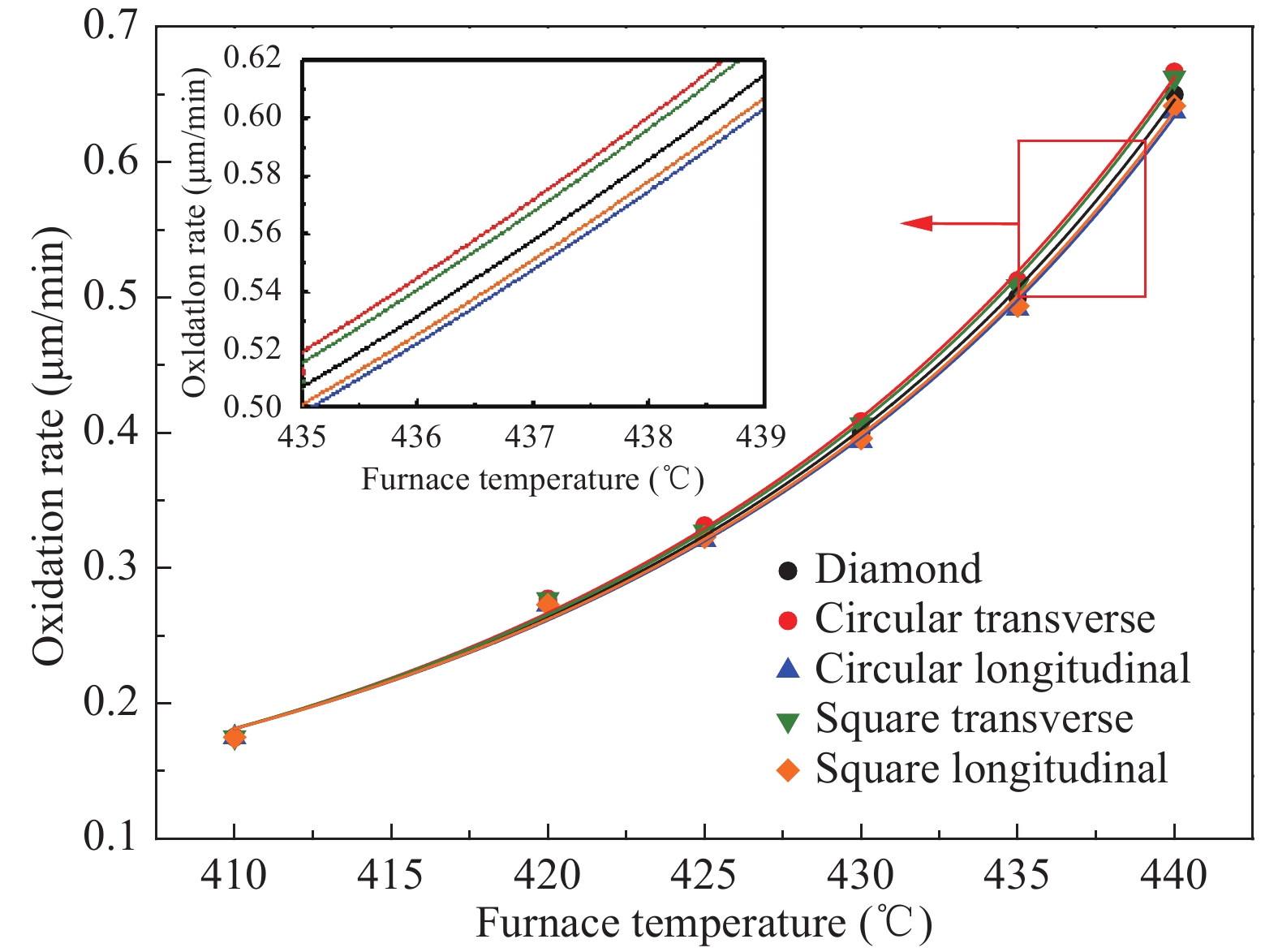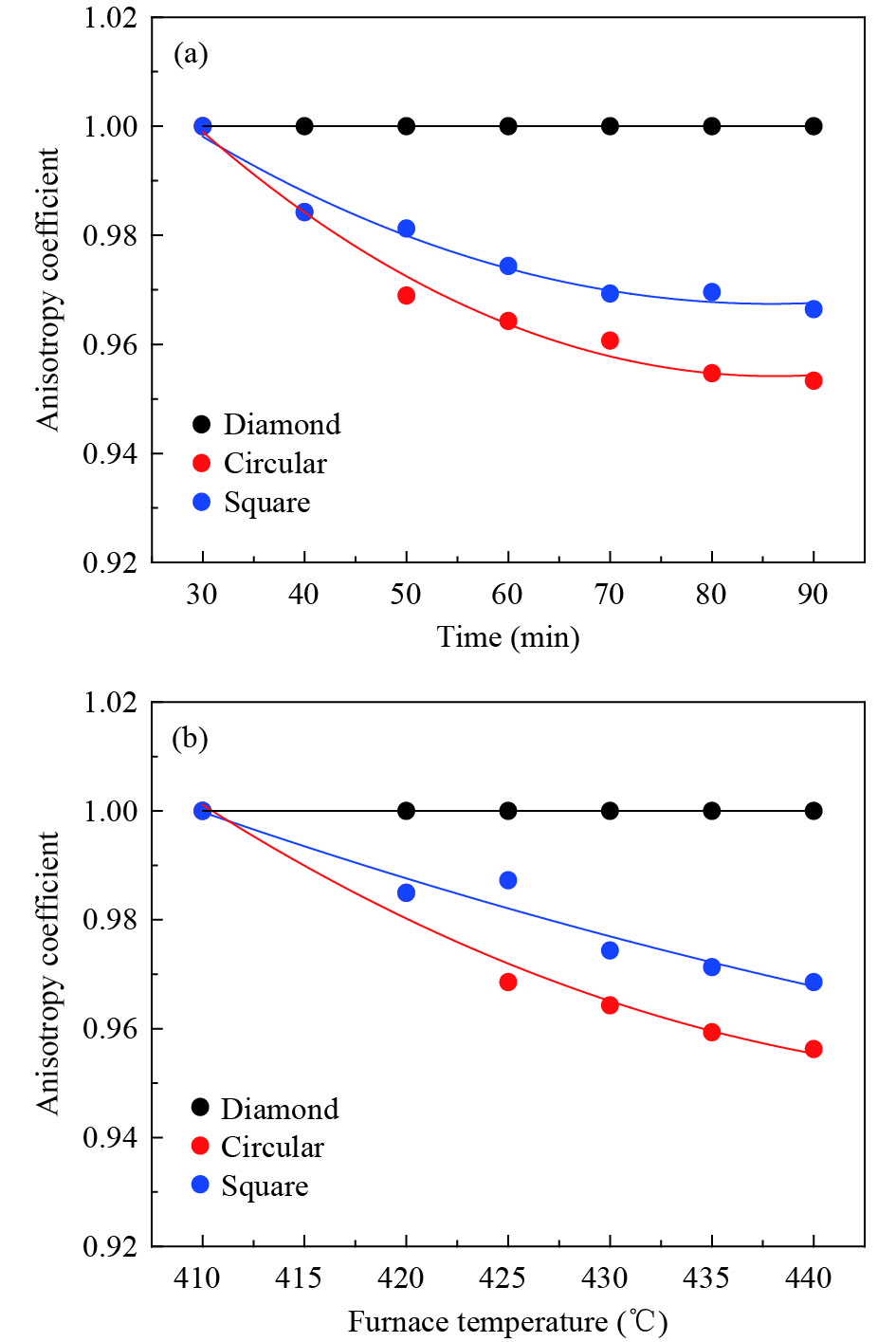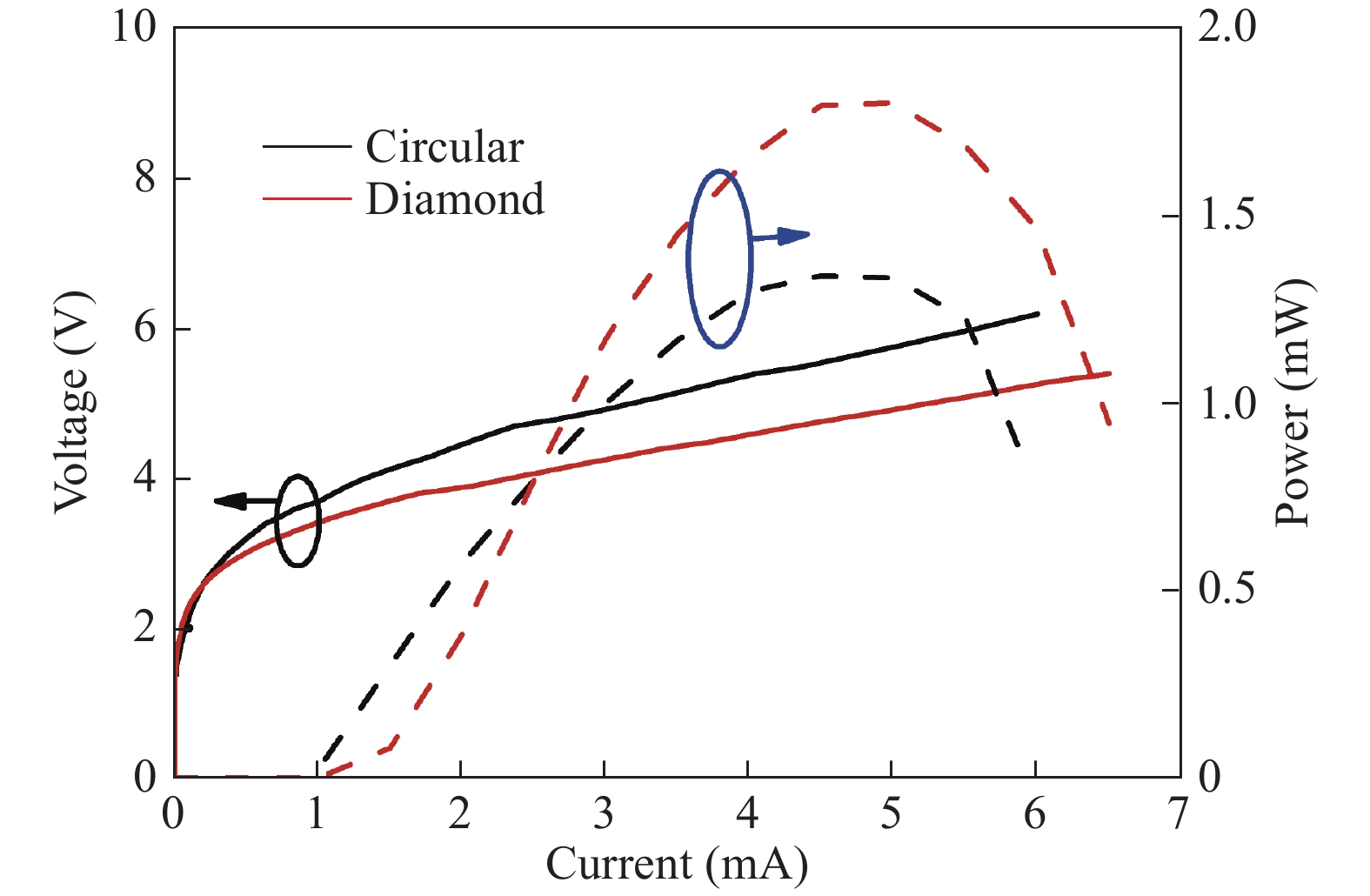| Citation: |
Yan He, Xiaoying He, Shuai Hu, Jiale Su, Chong Li, Anqi Hu, Xia Guo. Wet nitrogen oxidation technology and its anisotropy influence on VCSELs[J]. Journal of Semiconductors, 2018, 39(12): 126001. doi: 10.1088/1674-4926/39/12/126001
****
Y He, X Y He, S Hu, J L Su, C Li, A Q Hu, X Guo, Wet nitrogen oxidation technology and its anisotropy influence on VCSELs[J]. J. Semicond., 2018, 39(12): 126001. doi: 10.1088/1674-4926/39/12/126001.
|
Wet nitrogen oxidation technology and its anisotropy influence on VCSELs
DOI: 10.1088/1674-4926/39/12/126001
More Information
-
Abstract
Vertical cavity surface emitting lasers (VCSELs) are widely used in optical communications and optical interconnects due to their advantages of low threshold, low power consumption and so on. Wet nitrogen oxidation technology, which utilizes H2O molecules to oxidize the Al0.98Ga0.02As, is used for electrical and optical mode confinement. In this paper, the effects of oxidation time, oxidation temperature and oxidation anisotropy on the oxidation rate are explored and demonstrated. The ratio of oxidation rate on [0–11] to [011] crystal orientation is defined as oxidation anisotropy coefficient, which decreases with the increase of oxidation temperature and oxidation time. In order to analyze the effect of the oxidation anisotropy on the VCSEL performance, an oxide-aperture of the VCSELs with two difference shapes is designed and then fabricated. The static performance of these fabricated VCSELs has been measured, whose threshold current ratio ~ 0.714 is a good agreement with that of the theoretical calculation value ~ 0.785. Our research on wet nitrogen oxidation and its anisotropy serves as an important reference in the batch fabrication of large-area VCSELs. -
References
[1] Chen H D, Zuo C. Very short distance optical transmission technology. Beijing: Science Press, 2005[2] Kuchta D M, Rylyakov A V, Schow C L, et al. A 50 Gb/s NRZ modulated 850 nm VCSEL transmitter operating error free to 90 °C. J Lightwave Technol, 2015, 33(4): 802 doi: 10.1109/JLT.2014.2363848[3] Larsson A, Westbergh P, Gustavsson J, et al. High-speed VCSELs for short reach communication. Semicond Sci Tech, 2010, 26(1): 014017[4] Westbergh P, Safaisini R, Haglund E, et al. High-speed oxide confined 850-nm VCSELs operating error-free at 40 Gb/s up to 85 °C. IEEE Photonic Tech Lett, 2013, 25(8): 768 doi: 10.1109/LPT.2013.2250946[5] Moser P, Lott J A, Bimberg D. Energy efficiency of directly modulated oxide-confined high bit rate 850-nm VCSELs for optical interconnects. IEEE J Sel Topics Quantum Electron, 2013, 19(4): 1702212 doi: 10.1109/JSTQE.2013.2255266[6] Safaisini R, Haglund E, Westbergh P, et al. 20 Gbit/s data transmission over 2 km multimode fibre using 850 nm mode filter VCSEL. Electron Lett, 2014, 50(1): 40 doi: 10.1049/el.2013.2774[7] Ledentsov N, Shchukin V A, Ledentsov N N, et al. Direct evidence of the leaky emission in oxide-confined vertical cavity lasers. IEEE J Quantum Electron, 2016, 52(3): 1[8] AL-Omari A N, Ababneh A, Lear K L. High-speed inverted-polarity oxide-confined Copper-plated 850-nm vertical-cavity lasers. IEEE J Sel Top Quantum Electron, 2015, 21(6): 462 doi: 10.1109/JSTQE.2015.2448053[9] Shi G Z, Guan B L, Li S, et al. Power dissipation in oxide-confined 980-nm vertical-cavity surface-emitting lasers. Chin Phys B, 2013, 22(1): 014206 doi: 10.1088/1674-1056/22/1/014206[10] Li H, Wolf P, Moser P, et al. Temperature-stable, energy-efficient, and high-bit rate oxide-confined 980-nm VCSELs for optical interconnects. IEEE J Sel Top Quantum Electron, 2015, 21(6): 405 doi: 10.1109/JSTQE.2015.2389731[11] Haglund E, Westbergh P, Gustavsson J S, et al. 30 GHz bandwidth 850 nm VCSEL with sub-100 fJ/bit energy dissipation at 25–50 Gbit/s. Electron Lett, 2015, 51(14): 1096 doi: 10.1049/el.2015.0785[12] Liu M, Wang C Y, Feng M, et al. 850 nm oxide-confined VCSELs with 50 Gb/s error-free transmission operating up to 85 °C. 2016 Conference on Lasers and Electro-Optics (CLEO), 2016: 1[13] Guha S, Agahi F, Pezeshki B, et al. Microstructure of AlGaAs-oxide heterolayers formed by wet oxidation. Appl Phys Lett, 1996, 68(7): 906 doi: 10.1063/1.116226[14] Sugg A R, Holonyak J N, Baker J E, et al. Native oxide stabilization of AlAs-GaAs heterostructures. Appl Phys Lett, 1991, 58(11): 1199 doi: 10.1063/1.105213[15] Jia H Q, Chen H, Wang W C, et al. Improved thermal stability of wet-oxidized AlAs. Appl Phys Lett, 2002, 80(6): 974 doi: 10.1063/1.1448166[16] Choquette K D, Geib K M, Ashby C I H, et al. Advances in selective wet oxidation of AlGaAs alloys. IEEE J Sel Top Quantum Electron, 1997, 3(3): 916 doi: 10.1109/2944.640645[17] Coldren L A, Corzine S W, Mashanovitch M L. Diode lasers and photonic integrated circuits. Hoboken: John Wiley & Sons, 2012 -
Proportional views





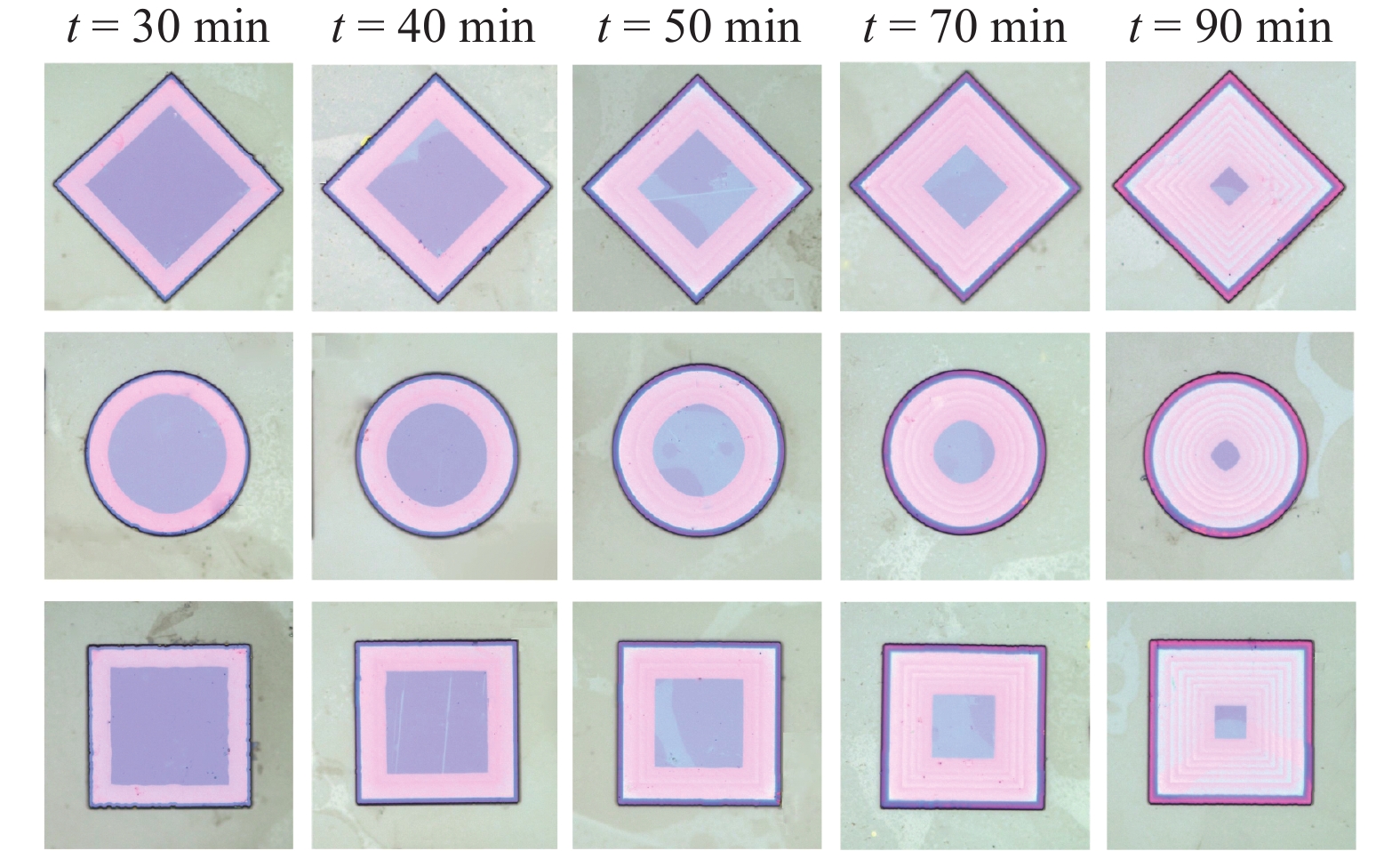
 DownLoad:
DownLoad:
